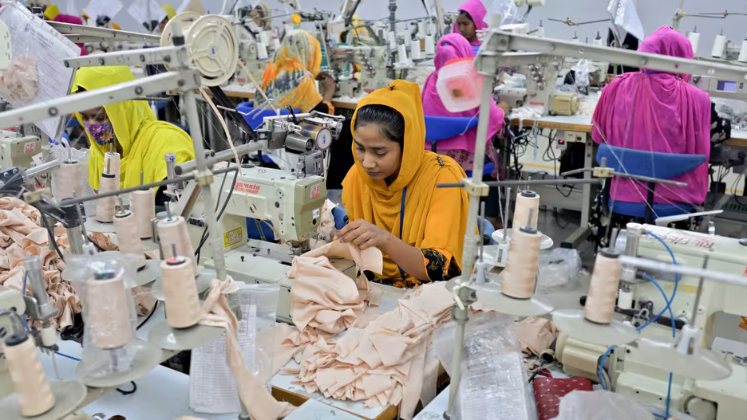
After the government scraps 50% ceiling on free-of-charge (FoC) imports, Bangladeshi apparel manufacturers expect to earn an additional US $ 5 billion in high-end garment exports in the first year. As per the new arrangement, raw materials such as fabrics, accessories and other inputs will be supplied by the buyers. In the second year, once the FoC quota is fully abolished, they believe that additional earnings might exceed US $ 10 billion.
The Commerce Ministry has chosen to modify the Import Policy Order within the next two weeks, according to the Chief Adviser’s Office. The amendment will enable clothing exporters to procure all raw materials from foreign purchasers, process them and return the completed goods. Under the FoC system, exporters are now only allowed to import half of the necessary raw materials.
According to Md Shehab Udduza Chowdhury, Vice President of the Bangladesh Garment Manufacturers and Exporters Association (BGMEA), exports from Bangladesh might increase by US $ 5 billion in the first year following the elimination of the FoC limit.
He anticipates that the value would surpass US $ 10 billion in the second year as the FoC set-up allows firms to obtain all raw materials.
FoC imports were limited to 33% of total raw materials a few years ago. Afterwards, this was raised to 50%. Under FoC, foreign purchasers provide the textiles, accessories and other materials required to make export goods. Only the cutting and manufacturing charge is paid to local manufacturers. Due to stringent regulations and documentation issues at Chattogram customs, local clothing exporters currently employ FoC for less than 5% of all shipments.
Exporters of clothing claim that FoC is simpler, safer and quicker. They think that because Bangladesh has a great manufacturing capacity and a competent workforce, international brands will put more orders there if there is no quota on FoC imports.
Currently, standard letters of credit (LCs) are used for the export of over 95% of clothing. Due to bureaucratic obstacles and import restrictions, FoC has not been widely adopted. According to BGMEA Vice-President Md Shehab Udduza Chowdhury, he proposed relaxing the regulations two months ago.
According to him, in the fiscal year 2022–23, Bangladesh exported clothing made of synthetic fibres for US $ 7 billion. Just 4% of the raw materials came from local textile factories; the remainder were imported, mostly from China.
Manufacturers claim that because the US has increased taxes on Chinese goods, orders for upscale man-made fibres and polyester clothing are moving from China to Bangladesh. Because the existing FoC regulations prohibit them from importing more than 50% of raw materials, certain Bangladeshi manufacturers are unable to fully benefit from it.
According to Md Shehab Udduza Chowdhury, FoC reduces risk because buyers cover raw material costs and cannot cancel orders abruptly.
He said that more foreign currency will stay in the nation under complete FoC imports since clothing manufacturers won’t have to pay dollars upfront for raw material imports as they would under the LC regime.






